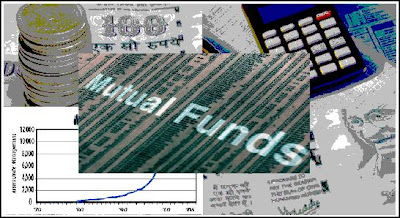
Consider the dividends declared by different tax saving ELSS (Equity linked Saving Scheme) funds
- Birla Equity Plan (Mar-08)
- Birla Sun Life Tax Relief 96 (Mar-08)
- SBI Magnum Tax Gain (Feb-08)
- HDFC Tax Saver (Mar-08)
- Sundaram BNP Paribas Tax Saver (Mar-08)
- Principal Tax Saving (Mar-08)
- Fidelity Tax Advantage (Mar-08)
- DSP - ML tax Saver (Feb-08)
- Lotus India Tax Plan (Jan-08)
Let’s get to the basics first. As we all know, mutual funds are a form of collective investment which enable many people to pool in funds and have a common diversified portfolio managed through professional fund managers at relatively low costs. The NAV or Net Asset value of a fund is
NAV= (Total Holdings Value+ Cash)/ No of units sold
When a mutual fund declares a dividend, it liquidates its holdings and converts them into cash for distribution to the unit holders. Consider a fund having total assets worth 1000 Rupees and 100 outstanding units. So, the NAV of the fund is 1000/100=10. Now, if the fund announces a dividend of Rupees 5/unit, then it sells off its holdings worth Rupees 500 to generate Rupees 500 worth cash which is then distributed to the unit holders. So, its NAV reduces to a value which is approximately equal to the dividend declared (approximately and not exactly because of certain variables like portfolio appreciation on the record date, dividend distribution tax, etc) . This means that you are, in effect, being returned your money back when you receive a dividend payout by a mutual fund.
Consider a scenario where you have Rupees 1000 to invest in a mutual fund scheme. The fund has an entry load (the initial amount deducted towards distribution/ marketing costs) of 2%. The Fund NAV before dividend is Rupees 10 and the dividend declared is Rupees 5/unit.
When you invest the amount just before the record date, the fund deducts 2% entry load i.e. Rupees 20. Part of this amount is handed over to the advisor as a commission. For simplicity, assume that the entire entry load is passed onto the distributor as commission. So, in our case, your investment advisor gets Rupees 20 in commission. Out of the remaining amount (i.e. Rupees 980), the fund units are bought for you at the prevailing NAV (i.e. Rupees 10/unit). So you have 98 units of the fund before record date. Post record date, you get a dividend of Rupees 5/unit. (i.e. 98 X 5 = 490 Rupees)
Case I (Before Dividend)
| Total Amount | Fund NAV | Units owned | Amount in Fund | Cash Owned | Commission Paid |
| 1000 | 10 | 98.00 | 980.00 | 0.00 | 20.00 |
| (Investment, After Dividend is declared) | |||||
| 1000 | 5 | 98.00 | 490.00 | 490.00 | 20.00 |
This means that in effect, to invest 490 rupees in the fund, you end up paying 20 rupees load (or commission)
On the other hand, if you buy into a mutual fund just after the record date, you end up paying lesser commission. Consider the case when you invest rupees 500 in the same fund on the next day of the record date. The 2% load is deducted in this case also and amounts to Rupees 10. Out of the remaining amount, (i.e. Rupees 490), the units are bought for you at the prevailing NAV (i.e. Rupees 5/unit). So, even in this case you have 98 units of the fund at a purchase price of Rupees 5/unit
| Total Amount | Fund NAV | Units owned | Amount in Fund | Cash Owned | Commission Paid |
| 1000 | 5 | 98.00 | 490.00 | 500.00 | 10.00 |
In both the cases mentioned above, effectively, the investor has same amounts invested in the fund. This means that the chances of capital appreciation are exactly the same in both the cases. However, in the first case, the investor ends up paying extra load and has less cash available with him.
It is clear from the above example that the distributors have a selfish intent in promoting and selling mutual funds just before they declare dividends. The investor, on the other hand loses out. Please note that the mutual funds do not claim that buying a fund before dividend is profitable... but again, they do not clarify this fact either. So, next time, do a little bit of homework before you take advice from a distributor. It is your hard earned money after all…


No comments:
Post a Comment